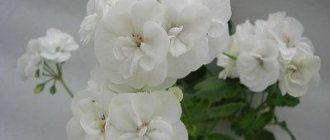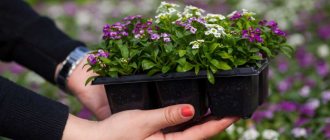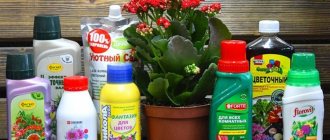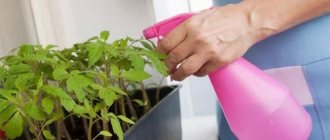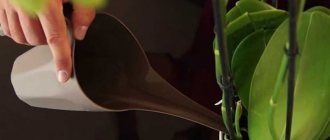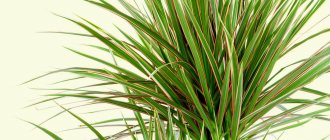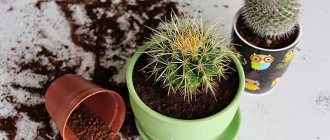Author of the article: Anna Vladimirovna | Updated: 01/12/2022
XXI CENTURY Candy Fudge Scented water
266 ₽ More details
Video baby monitor Motorola MBP36S (white)
12900 ₽ More details
Czech shoes for girls
Among the wide variety of indoor plants, hydrangea is worth special mention. It is valued among flower growers for its beautiful and bright flowering. Moreover, if you know how to care for a plant, you can even change the colors of its buds. This article will tell you what this flower is and how to care for it to get beautiful blooms.
Why is it important to feed on time?
It is necessary to provide nutrition for hydrangea throughout the entire period of spring and summer.
The plant also needs nutrition to restore its strength to generate buds for the next season. If you do not add nutrients, the hydrangea will bloom less often, and the color of its buds will not be so bright. In July, before the flowering of paniculate and tree hydrangea, substances identical in composition are used, since these two varieties have the same nutritional preferences. This period is the most crucial. If you do not apply the necessary fertilizers, the buds will be small and will not last long on the stem.
Diluting a solution of potassium permanganate for watering flowers.
There is no point in diluting large volumes of potassium permanganate at home, so the best option for us would be 1-2 liters. Potassium permanganate dissolves better in warm water, so you need to prepare a container with warm water (30-40 degrees) in which you will directly dilute the solution. And a container in which you will regulate the concentration of the substance. For breeding in warm water, a small bowl will suit you. Wet the tip of a toothpick and dip it in potassium permanganate. The required amount of crystals will stick to the tip, and we begin to dilute them in warm water. For now we don't care about concentration. After the crystals have completely dissolved, you can pour our solution into a two-liter container, adjusting the concentration of the solution by adding the required amount of water.
Features of the fertilizer
in spring
If you properly fertilize a flower, it will have a bright, beautiful leaf plate and abundant flowering throughout the season.
The first spring feeding is necessary for the formation of healthy and strong leaves. It should be carried out in March, as soon as sap flow begins. During this period use:
- Nitrogen preparations. You can use a mixture consisting of urea and potassium sulfate (20 g per bucket of water). For 1 bush, 5 liters of solution is enough.
- Organic matter , for example, slurry.
- Phosphorus and potassium. These minerals must be introduced before flowering. For 10 liters there is 1 tbsp. substances.
- Potassium permanganate. You need to spray the leaves of the bush with a weak solution (3 times in the spring). Then the plant will be strong and flexible.
In summer
- In June, a solution of nitrophoska and Agricole is needed (20 g per bucket of water). Organic doesn't hurt either. Under each plant you can pour 10 liters of diluted nettle infusion.
- In mid-July, the flower needs to be fed so that the inflorescences actively bloom and bloom for a long time. Store-bought drugs are suitable, for example, Kemira flower. For 10 liters of water there is 1 tbsp.
- In August, you can use mineral fertilizers, alternating with organic ones.
in autumn
Autumn fertilizing is necessary to prepare the crop for the dormant period and the formation of young shoots with flower stalks. Potassium-phosphorus compounds are used.
Potassium makes the plant's root system stronger and helps it survive the cold winter.
With the onset of autumn, the plant needs organic matter, for example:
- peat;
- compost;
- humus.
Spread the fertilizer near the bush in a layer of 5-10 cm. Then the soil will not freeze in winter, and the root system will be protected.
Reproduction
Most often, propagation of this flower is carried out by cuttings and dividing the bush. Planting seeds is used less frequently: this method is quite labor-intensive and does not always give positive results.
Cuttings
This is the easiest way. Held in January-February. Cut cuttings from root shoots so that there are no more than 3 internodes on a branch 8 cm long. Remove leaves from the bottom of the cuttings. Shorten the top ones by half. Treat the lower cut with a root stimulator. Plant the cuttings in a substrate of sand and peat, keep in the light at a humidity of about 80/% and a temperature of up to 20 degrees. It is recommended to cover the cuttings with glass jars, removing them daily for ventilation. Keep the soil constantly moist. After 3-4 weeks, the cuttings can be planted in pots.
Hydrangea cuttings with roots
Dividing the bush
Also a simple method, but it requires caution. When replanting annually, divide the bush so that each division has growing points and roots in the required quantity. Shoots and roots need to be shortened. Place parts of the plant in different pots, water and mulch the soil. It is better to divide the bush in the spring if you want the divisions to take root by autumn.
Growing from seeds
Held at the end of winter. Prepare soil from equal parts of humus, leaf and turf soil. Add half of peat and sand. Place some substrate in a bowl and scatter hydrangea seeds over the surface without embedding them in the soil. Cover the bowl with the crops with glass. Every day, ventilate and moisten the crops with a spray bottle so that the soil is constantly moist, but not wet. The glass can be removed after germination. When the seedlings have 2 leaves, plant them in containers with the same soil.
Propagating hydrangea by seeds is a painstaking task.
Strictly observe the propagation time so that the hydrangea grows and forms correctly.
What types of fertilizers are there?
Nitrogen
Used in early spring, immediately after the snow melts. But nitrogen must be applied carefully. If you exceed the dosage, the foliage will begin to grow actively, but the flowering will not be bright and long-lasting. The following fertilizers are suitable:
- Urea - 10-15 g of substance per bucket of water.
- Ammonium nitrate - 15-20 g of the drug per bucket of water.
- Ammonium sulfate - it is placed in the ground in a layer of 5 cm.
Complex mineral
In spring, the following substances are used:
- Nitroammophoska. Dissolve the drug (20-30 g) in a bucket of water. 1 adult plant requires 5 liters of solution.
- Diammfoska – dosage per bucket is 30 g (after flowering).
- Potassium monophosphate - dosage 10-15 g of the drug.
The above fertilizers do not contain microelements, so it is recommended to add humates to the prepared solution.
Phosphorus-potassium
Lack of phosphates negatively affects metabolic processes. You can tell the deficiency by the presence of blue leaves.
You need to use phosphorus-potassium fertilizing once a season. These substances dissolve gradually and do not penetrate deeper into the soil.
With humates and microelements
Humates are suitable, which will allow mineral fertilizers to be better absorbed. You can take Potassium Humate as a basis and add complex mineral fertilizer to it (take in equal proportions).
Unusual means
Interesting top dressing:
- Kefir. 2 liters and 10 liters of water are enough. Necessary for watering hydrangeas.
- Yeast infusion. Dosage 3 tsp. sugar and 10 g of dry yeast per bucket of water. One plant will require 5 liters of product.
- A weak solution of potassium permanganate (should be slightly pink). The shoots will be strong and the buds will be large.
Ready-made special formulations
To feed the flower, you can use purchased ready-made preparations (dosage per 10 liters of water):
- Fertika Kristalon – 1 tsp.
- Agricola “For hydrangeas” – 15 ml of the drug. 1 plant will require 5-7 liters.
- Bona Forte “Fertilizer for blue hydrangeas” – 80 ml. Consumption – 10 l per 5 m2 of planting.
To acidify the soil
For luxurious flowering of hydrangea and protection from chlorosis, the soil should always be acidic.
To do this, it needs to be acidified periodically - once a month during flowering. The following solutions are suitable for these purposes (dosage per 10 liters of water):
- Slightly acidic electrolyte solution – 10 ml of the drug.
- Apple cider vinegar – 100 ml.
- Citric acid – 20-40 g.
It is advisable to add iron chelate (20-30 g per 10 l) to the solutions prepared above.
Folk remedies
The following home remedies are effective for feeding the flower:
- Cow dung. Dissolve it in water in a ratio of 1:10. Wait 14 days, stir the mixture periodically. After this, dilute the infusion with another 10 liters of water. Pour the resulting solution onto the bush at the root. If cow manure is not available, then horse or rabbit manure will do. After 2-3 days the treatment can be repeated.
- Serum. Dilute 1 liter of fermented milk product in 10 liters of water. Water the plant at the root with the resulting solution.
- Black bread. It contains yeast, which has a positive effect on the plant itself and the soil. Infuse a loaf of bread in 10 liters of water for 2-3 days. Send the filtered solution to the root of the bush.
To change the color of a flowering plant
You can regulate the color of hydrangea flowers by changing the acidity of the soil. The more acidic it is, the more saturated the color (purple or blue). You can get pink or crimson flowers if you grow the bush in soil with an acidity of 6-6.2 pH.
To reduce acidity, deoxidizers are needed:
- dolomite flour;
- lime;
- wood ash;
- fluffy.
And to get blue flowers from pink flowers, you can prepare a solution of potassium alum (30 g per 10 liters of water). One bush will take 2-3 liters.
Color changing technology, step-by-step diagrams and instructions
The first thing to do in the procedure for changing the shade of inflorescences is to find out the degree of acidity of the earth. To do this, you need to use special chemicals or turn to “grandmother’s” methods for help.
Step by step diagram
- Determine the acidity of the soil.
- We select different preparations for different colors.
- We water it with a solution or add dry preparations, but be sure to incorporate it into the soil.
Application of drugs
You can change the composition of the earth and make it less or more acidic using chemicals.
There are two different effective and inexpensive methods.
The first is to use acidic peat during the planting process (coniferous peat is perfect). The second is to feed with fertilizers that oxidize the soil.
To make an area less acidic, it is necessary to add additives to make it neutral. The following mineral fertilizers are suitable for this:
- Dolomite flour.
- Limestone.
- Calcite.
- Chalk.
Adding nutrients to different types of shrubs
Paniculata
For this variety of hydrangea, complex mineral fertilizers from the following manufacturers are suitable:
- Fertika. During 2 weeks of the growing season, you need to apply liquid fertilizer. This is a long-acting fertilizer. It must be scattered near the bush, mixed with soil, and then watered with water.
- Green World. This drug is used for active flowering. You need to apply 1-2 times per season. A nutrient mixture consisting of nitrogen, potassium, magnesium and phosphorus. Contains nitrogen, aluminum and potassium oxide, which increase the vitality of the crop.
large-leaved
For this plant, fertilizing must be done in several stages:
- Early in the spring. Add a nutrient mixture consisting of nitrogen, phosphorus and potassium to the root part. This will activate the formation of shoots and improve leaf growth. You can use purchased complex fertilizers for hydrangeas.
- During the formation of buds. Apply only potassium-phosphorus compounds. After 2 weeks, feed the plant again.
Treelike
This plant is tall (up to 1.5 m). So nutrition for the full growth of tree hydrangea is simply necessary. Fertilizing needs to be done in several stages:
- Early in the spring. Kemira flower required. It can be applied dry or as an aqueous solution.
- The period of bud formation. Superphosphate and potassium sulfate (50 and 25 g) are used.
During flowering of the plant, the shoots need to be treated with potassium permanganate.
Mulching the soil for Hydrangea
When watering garden Hydrangeas, it is recommended to make borders from the soil so that the water does not spread, but is localized and the roots of the plant absorb it.
Mulching is done to help the mulch retain moisture and help prevent weeds. Mulch is often used for decoration and also to keep the area around the pot clean. Used as mulch:
- coffee grounds and pine needles are durable and are recommended for mulching Hydrangeas because they have an acidic reaction;
- shells, stones, pebbles are used to retain moisture and also have an aesthetic appearance;
- eggshells are considered an affordable material that, in addition to its mulching function, repels some types of pests.
- It is advisable to use inorganic mulch, it is durable and much less likely to create unpleasant odors in the room.
Watering
How often is it done?
The norm is 50 liters 2 times a week. If natural precipitation occurs and the soil is deeply saturated with rainwater, then there is no need for additional moisture.
Mulch will help reduce the frequency of watering. Mulched bushes are moistened once every 7-10 days.
How and what to water?
Hydrangea is a capricious plant, so it has its own requirements for watering:
- It is forbidden to use hard water, as it can affect the acidity of the soil. Soft and warm water is best.
- You can add 2-3 g of potassium permanganate to the water. This will prevent the development of rot.
- Water the bush in the morning or evening.
- After each moistening, loosen the soil to a depth of 5-6 cm.
Bread crusts
Surprisingly, abundant flowering of hydrangea can be stimulated even with the help of stale bread crusts, which contain yeast, as well as microelements necessary for the development of the plant, stimulating the process of its vegetation.
Immediately after entering the soil, these components fertilize the soil, increasing the level of activity of microorganisms in it. Fertilizing with bread crusts not only improves the flowering of the plant, but also strengthens the root system of the bush, resulting in accelerated growth of the entire bush.
To prepare the fertilizer, you need to pour water over the bread crusts so that the liquid completely covers them. You need to put a weight on top of all this, and send the container with the contents to a place where the rays of the sun fall. After a few days, the composition will ferment - it needs to be removed in the shade. This composition should not be used for irrigation in its pure form, but must first be diluted with water in a ratio of 1:3. Fertilizer must be applied under the bush.
It is recommended to apply this product at those moments when buds begin to form on the bushes. To water hydrangeas with any fertilizer, it is better to choose the evening, after the sun has completely set.
How and what is the best way to feed after flowering?
In August, the plant already needs to be prepared for winter. Phosphorus-potassium fertilizer will help with this. It needs to be applied in the second half of September, before frost comes.
To obtain a solution, you need to dissolve 2 tbsp. superphosphate and 20 g of potassium sulfate. 1 plant requires 10 liters of solution.
After 2-3 days, the surface of the soil in the tree trunk circle needs to be covered, a layer of mulch should be laid from:
- peat;
- pine shavings;
- humus.
This will insulate the roots and give them additional nutrition.
Preparing for winter
Many hydrangea varieties are acclimatized for countries with cold climates. For successful wintering, young plants must be insulated. The roots may not be affected, but the young shoots will die from frost.
In the southern regions, hilling is sufficient, but in the northern regions it is necessary to cover with spruce branches, peat and film. The plant can also be placed in a rigid frame and covered with dry leaves or wrapped in hay or straw.
If you figure it out, taming the whimsical hydrangea is not at all difficult. We have broken down the first year of life from planting in open ground to wintering into simple recommendations that will help you grow a beautiful flowering bush from a small seedling.
What to do if the leaf blades turn yellow?
If yellowing of the platinum sheet is observed, then you need to find out the cause of this phenomenon and eliminate it:
- Drafts. A secluded place in an area where there are no gusts of wind is suitable for the flower. It is best to use areas along the house or fence for planting.
- Lack or excess of moisture, light. The plant must be planted in a slightly dark place. You also need to make sure that the soil does not dry out, otherwise the foliage will not only begin to turn yellow, but also fall off.
- Lack of nutrition. Before planting the tree, you need to add 10 kg of rotted manure into the planting hole.
- Powdery mildew. This is a fungal disease, to combat which you need to remove all affected areas of the hydrangea.
Water retaining material for Hydrangea
This is also called drainage materials. They are used to ensure that water lingers longer, but does not create a rotting process. It could be:
| Material | Description |
| Expanded clay | Reminiscent of small brown pebbles, the moisture-resistant material allows it to perform water-retaining functions. It is recommended to pour about 3 cm into small pots, and for moisture-loving plants, sometimes fill the pot a third with expanded clay |
| Styrofoam | Cut into small pieces, place it at the bottom of the pot at a depth of 3-5 cm, then sprinkle it with earth and plant the plant |
You can use different materials for drainage, the main thing is that they are moisture resistant.
What are the dangers of nutritional deficiency and excess?
When there is a lack of nutrients, the following phenomena are observed:
- Leaf chlorosis. They become light yellow and pale. To save the plant, you need to water it once every 10 days with a solution of iron-containing salts. You can dissolve 6 g of iron sulfate in a bucket of water.
- Dark spots on leaves during flowering. This symptom indicates a lack of potassium.
If you apply fertilizer in excess, this is fraught with the following consequences:
- Excess nitrogen - the plant will not be able to fully prepare, and its frost resistance decreases. Freezing of the buds in winter will negatively affect flowering.
- Oversaturation with fertilizers with inadequate watering increases the salt content in the soil. Because of this, young roots suffer.
- Potassium oversaturation contributes to premature yellowing of the leaf blade and deterioration of the color of the buds.
- An increased concentration of phosphorus will lead to poor absorption of iron, zinc and other trace elements by the plant. The flower becomes sensitive to lack of light.
Soil moisture determination
Excess moisture can lead to the development of Hydrangea diseases, these are diseases that are associated with rot and mold. But a lack of soil or air moisture can affect the appearance of the plant, this is primarily the withering of the inflorescences, which begins from the edges, as well as the ends of the leaves. There is also definitely a need for watering if the soil under the surface is dry.
Household humidifiers are often used to maintain indoor air humidity. They often have built-in thermometers and hygrometers, with which the temperature and humidity of the air are monitored. In addition to household appliances, sprayers are used that spray water around the plant in the room, which provides the required level of moisture for Hydrangea.
Errors when leaving
Experienced gardeners were able to identify common mistakes in caring for hydrangeas:
- If a flower is overfed with nitrogen, it will not have time to harden by winter, which is why it will not tolerate frost well.
- Tap water is prohibited for watering the plant, as it will contain a lot of chlorine. It is this that is a common cause of leaf chlorosis.
- Do not use stagnant water, which can lead to rotting of the root system.
- Watering should not be done during the day, and drops of water should not fall on the flowers, otherwise it will cause a burn.
It is necessary to fertilize hydrangea throughout the growing season. Feeding should be used rationally and in accordance with the schedule. Excess or deficiency of nutrition can lead to various consequences, as well as the death of the flower.
Answers to frequently asked questions
How to propagate pink hydrangea?
Any variety of shrub is propagated by layering.
Why does climbing hydrangea not bloom after several years?
Climbing varieties begin to bloom only when their “adult” leaves begin to grow.
Is it really possible to change the color of a hydrangea if you water it with different fertilizers?
Yes it is. You just need to know the basic techniques and methods of watering bushes to change color.
Pre-sowing treatment of seeds with potassium permanganate
To ensure that the seedlings grow strong and healthy, do not be lazy to soak the seeds in potassium permanganate. This simple procedure will not give pathogenic bacteria a chance to destroy your plants. In addition, soaking allows you to speed up the process of germination of seedlings.
You can pickle the seeds using the following recipe: dissolve 1 g of potassium permanganate in 1 liter of water until a light pink tint forms. Immerse them in the resulting solution for 15-20 minutes (it is not recommended to keep them longer so that the seeds do not get burned), then rinse and dry.
The seeds of any plants will respond well to pre-sowing treatment, so it is worth including this procedure in the list of gardening works
Seeds are soaked in potassium permanganate not only before sowing, but also for subsequent storage. After processing, they remain viable longer.
Potassium permanganate against parasites and pests.
It is believed that a solution of potassium permanganate not only disinfects and disinfects, but also helps in the fight against insect pests. There is a deal of truth in it. My experience shows that potassium permanganate can be used in combination with other pest control agents, but do not rely on it alone, since potassium permanganate is not a poison for most insect pests.
Will potassium permanganate help against midges? No - you cannot remove flying insects from your plant using potassium permanganate alone. Use special insecticides for this. To combat insect pests, I advise you to use ready-made preparations Fufanon and Actellik.

